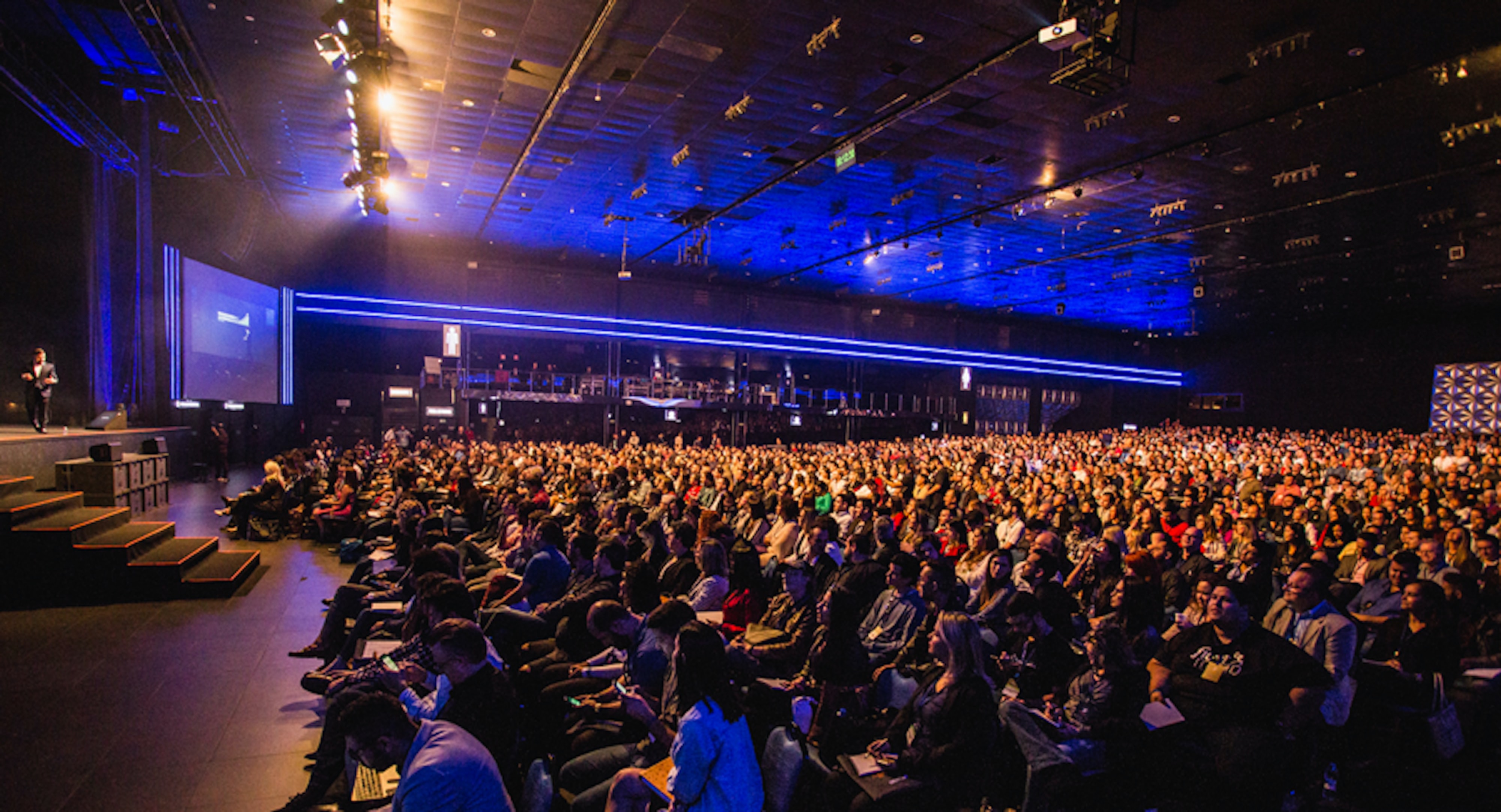Types of Virtual Events: A Beginner’s Guide with Formats and Examples (2025)
The Pigeonhole Live Team
April 7, 2025

Table of Contents
Virtual events continue to evolve in 2025, offering organizations flexible ways to connect with remote audiences. This guide explores the main types of virtual events—from webinars and hybrid conferences to virtual networking sessions—with real-world use cases and examples to help you choose the best format for your goals.
For those who have yet to catch on, it might seem like the world of virtual events is an ocean of verbal jargon to swim through. With so many options, which virtual event is the best option? We hear you! There are so many different types of virtual events you can run. Each type has its benefits and challenges. By the end of this article, you’ll have a better idea of understanding different types of virtual events and which are best for your needs.
What Is a Virtual Event?
A virtual event is an online gathering that enables participants to connect and engage through digital platforms rather than in a physical setting. These events harness a variety of technologies, including video conferencing, live streaming, and interactive online chat, to simulate the dynamics of face-to-face interactions. By using these tools, virtual events foster an engaging environment that encourages meaningful conversations, collaborative learning, and extensive networking opportunities among attendees from different locations.
This innovative format allows individuals to share ideas, form valuable connections, and participate in discussions, all from the comfort of their own spaces.A virtual event is an online gathering where participants interact and engage through digital platforms instead of meeting in a physical location. These events use various technologies such as video conferencing, live streaming, and online chat to create an environment similar to in-person events. This allows for interaction, learning, and networking among attendees.
What differentiates virtual events?
There are three main things to think about when it comes to familiarising yourself with different types of virtual events and choosing the right platform to use.
1. Size of audience
As with planning most marketing initiatives, we start by thinking of our audience: who are we planning this event for? Is it for employees of a company? Is it meant to gather entrepreneurs from around the region? Or is it an annual business gathering that’s open to the public? The size of your audience will vary across these examples, and you need to know which platform is best for the size of the audience.
2. Interactivity
Different types of virtual events platforms will give you different levels of interaction with the audience:
- High levels of interaction could involve a Q&A session during a fireside chat or doing a quick mood check to set the tone for the rest of the agenda. Tools like Pigeonhole Live allow users to interact virtually through Q&A, polls, and quizzes that can be used in a variety of ways to add high-level interaction to your virtual event.
- Events with low levels of interaction are more one-way in communication. The audience usually just needs to show up at a certain time and day to experience what the event has to offer.
3. Takeaway
Finally but most importantly, think about the takeaway of this event. Is it to entertain your audience and give them a brand experience like no other? Is it to educate your audience about a new product feature or how to handle current issues? Or is it to provide a platform for networking opportunities? Avoid running a virtual event until you are clear about the purpose and objectives of your event.
Types of virtual events you should know about

People tend to use terms for virtual events interchangeably, often creating confusion. To set the record straight, here are a few popular types of virtual events and their key differentiating factors:
1. Webinars
Webinars are live, interactive online meetings or workshops where a presenter engages the audience using various methods, such as presentation slides or live video. Typically, there’s an agenda that includes time for live Q&A, polls, and discussions. Webinars are scheduled for a specific date and time, and participants usually need to register in advance.
The great thing is, once your webinar ends, you can easily repurpose the content for on-demand viewing and distribute it far and wide. Enhance the video by removing audio noises, adding captions, music, or motion graphics, or use tools like VEED’s Magic Cut to quickly trim it into shareable clips for social media.
Characteristics
Main takeaway: To educate
Interactivity: High
Audience size: 50 - 200 people
2. Webcasts
Webcasts look like webinars but are used for one-way communication instead of two-way. There is limited engagement between the speaker and the user. Sometimes it doesn’t have to be a live-streamed session, it can also be a pre-recorded video that is broadcasted online for a certain period and may require registration to access it. It works as a great e-learning tool for a much bigger audience where you just want to get your content out without needing them to interact.
Characteristics
Main takeaway: To educate
Interactivity: Low
Audience size: Unlimited
3. Live Stream
A live-streamed event simply refers to any kind of virtual event that is happening in real-time and streamed across the Internet so that people who are not physically present, can still attend. It’s a term that refers more to whether an event is happening in real-time or not.
Webinars are typically live-streamed, seeing that it features a real person presenting in real-time. A webcast can also be called a “live-streamed event” if the speaker of the webcast is doing it in real-time. In this case, the takeaway, interactivity, and audience size factor would depend on what kind of experience you want to give your audience.
Characteristics
Main takeaway: To educate and/or entertain
Interactivity: Low
Audience size: Unlimited
4. Virtual fireside chats
This is centered around learning from an industry thought leader and Q&A opportunities often run throughout the duration of the conversation. They are typically live-streamed and can be organised on platforms like Zoom, which allow two-way conversations among people with shared interests. Although the audience capacity for a platform like Zoom can go up to 1000 people, it's best to keep the audience size small if you want to promote networking. Either that or you could market your event to feature different meeting rooms for different topics of conversation, all made possible under one brand.
Characteristics
Main takeaway: To network.
Interactivity: High
Audience size: 50 -100
5. Virtual Conferences / Summits
Virtual conferences and summits cater to the largest audience size. Just like a physical conference, there’s an agenda and the event can run between one to five days. During this time, the virtual event would use a variety of different formats where virtual attendees can learn, discuss, and network. Some brands practice marketing their event as an online conference to attend on a specific date, even if it is just a pre-recorded video being aired for that time only. A high-quality virtual conference experience might incorporate a mixture of elements such as VR immersion, AR activities, video live streaming, live-streamed webinar workshops, and interactive tools. You can get as creative as you like, depending on whether these ideas are suitable for your main takeaway, intended level of interactivity, and audience size.
Characteristics
Main takeaway: To entertain, educate, and/or network.
Interactivity: Low to high
Audience size: Unlimited
How to Choose the Right Virtual Event Type
Choosing the right type of virtual event depends on your goals, audience size, engagement expectations, and available resources. Start by identifying the primary purpose of your event—whether it is for lead generation, internal training, customer engagement, or community building.
Next, consider your audience profile. Large external audiences often benefit most from webinars or virtual conferences, while small teams may thrive in workshops or virtual networking formats.
It's also important to assess your interactivity needs. If you want to encourage discussion and collaboration, consider formats like breakout sessions or hybrid town halls that include live Q&A and polls. For passive content consumption, such as product demonstrations or investor updates, webinars may be more suitable.
Finally, ensure that your chosen format aligns with your budget and technical setup. High-production conferences may require advanced platforms, while tools like Zoom or Pigeonhole Live are effective for more scalable and easy-to-manage sessions.
Pro tip: Experiment with different event types throughout the year to discover which formats resonate best with your audience.
Benefits of Each Virtual Event Type
Each type of virtual event offers unique benefits depending on how and when it’s used. Here's a breakdown of the most common formats:
- Webinars
Ideal for presentations, product launches, or training sessions. They scale easily and offer high ROI with minimal setup.
Key benefit: Low-cost and widely accessible for on-demand viewing. - Virtual Conferences
Feature multiple sessions, speakers, and networking tools across days or tracks.
Key benefit: High brand exposure and deep audience engagement. - Online Workshops
Hands-on learning sessions with direct interaction, often in smaller groups.
Key benefit: Active participation and knowledge retention. - Virtual Networking Events
Promote relationship building through structured formats like speed networking or topic tables.
Key benefit: Builds community and peer-to-peer value. - Hybrid Events
Blend in-person and online experiences for broader reach.
Key benefit: Flexibility and inclusivity across geographies. - Virtual Town Halls
Great for internal communications and leadership alignment across distributed teams.
Key benefit: Transparent, company-wide updates with room for engagement.
By aligning the type of virtual event with your goals and audience expectations, you can maximize both participation and long-term value.
Embrace the future of virtual events
As the landscape of events continues to evolve, understanding the various types of virtual events empowers you to make strategic choices. From webinars to virtual conferences, these formats offer unique benefits and opportunities to engage audiences in innovative ways. Embrace the future of virtual events and unlock their full potential, positioning yourself for success in this dynamic environment!
Want to discover strategies for creating unforgettable audience experiences?

Frequently Asked Questions
Q: What are the main types of virtual events?
A: The main types of virtual events include webinars, virtual conferences, online workshops, virtual networking events, town halls, and hybrid events. Each serves different goals, from knowledge-sharing to real-time collaboration.
Q: Which type of virtual event is best for large audiences?
A: Webinars and virtual conferences are best suited for large audiences, offering scalable content delivery, speaker sessions, and audience interaction through polls and Q&A.
Q: Can I combine virtual event types in one event?
A: Yes, many organizers blend formats—like combining keynote webinars with breakout workshops or live polling during a conference—to increase engagement and content depth.
Q: What’s the difference between a webinar and a virtual conference?
A: A webinar is typically a single-session presentation or talk, while a virtual conference includes multiple sessions, speakers, and often networking opportunities across one or more days.
Q: Are hybrid events considered virtual?
A: Hybrid events are partially virtual, combining live in-person elements with a virtual experience, making them more flexible and accessible to remote attendees.
Download our ebook to uncover more ways to apply the two-way conversation approach in your town halls.
